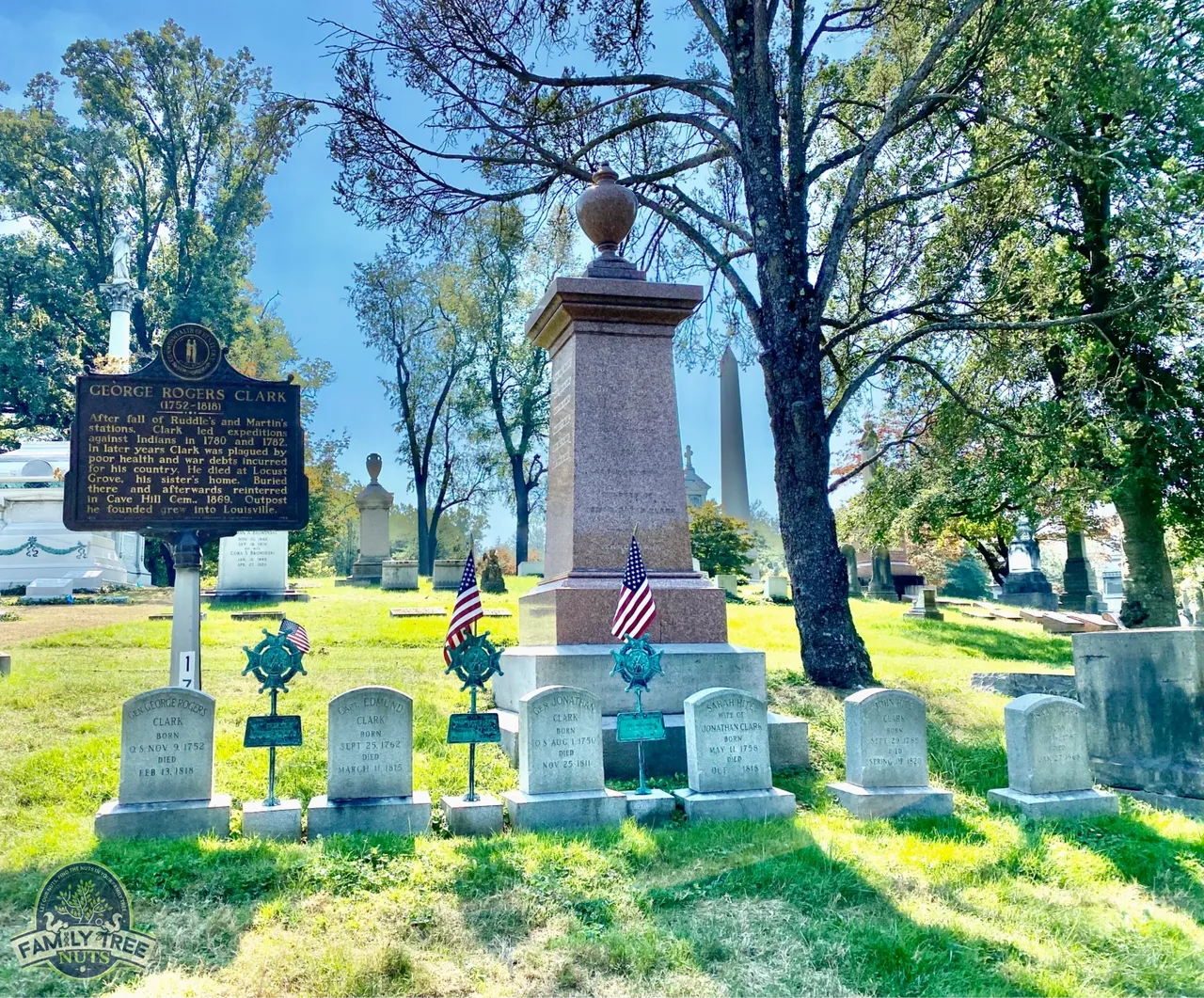
GRAVE AND HISTORY OF GENERAL GEORGE ROGERS CLARK
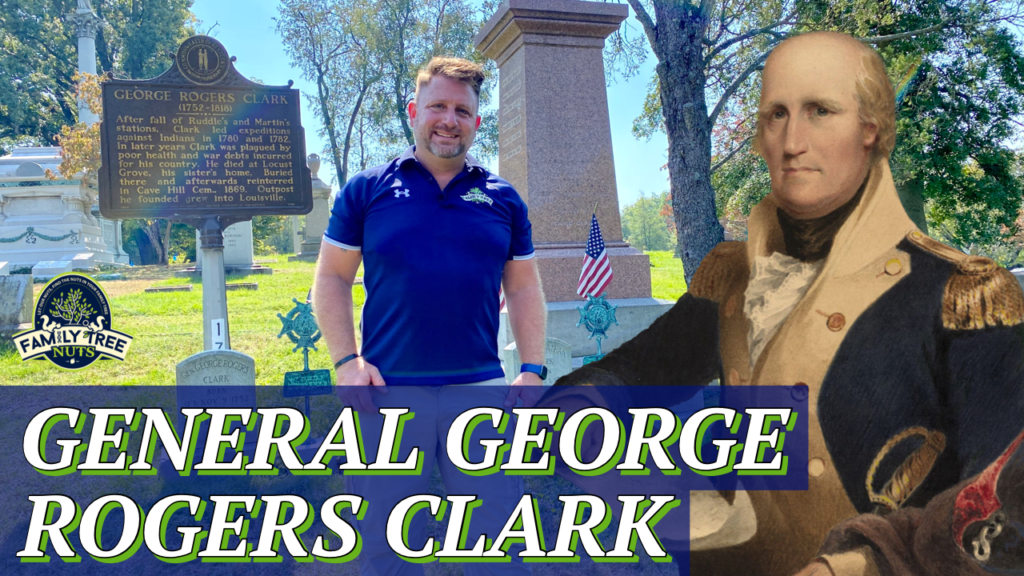
He has been called, the “Washington of the West”, the “Conquer of the Old Northwest”, and the “Founder of Louisville”, General George Rogers Clark. Clark, often referred to as “GRC”, is today buried in Cave Hill Cemetery, in Louisville, Kentucky, but his life that lead here to his final resting spot was nothing short of amazing.

George Rogers Clark was born in 1752, near Charlottesville, Virginia. He was taught to survey land by his grandfather, and in 1771, he took his first surveying trip into Kentucky, four years before settlement, in 1774. He served as a Captain in the Virginia militia, in Lord Dunmore’s War. In June of 1776, he was sent as a delegate to the Virginia Legislature, to request them to make Kentucky a County, of Virginia. The next year was the “Year of Three Sevens”, or also known as, the “Bloody Sevens”, when there were numerous attacks on the Kentucky frontier, by Native Americans, that were backed by the British. The Colonial army could not spare men, or supplies to Kentucky, so Clark visited Governor Patrick Henry, to request that he allow him to lead a secret mission against the British outposts, north of the Ohio River.
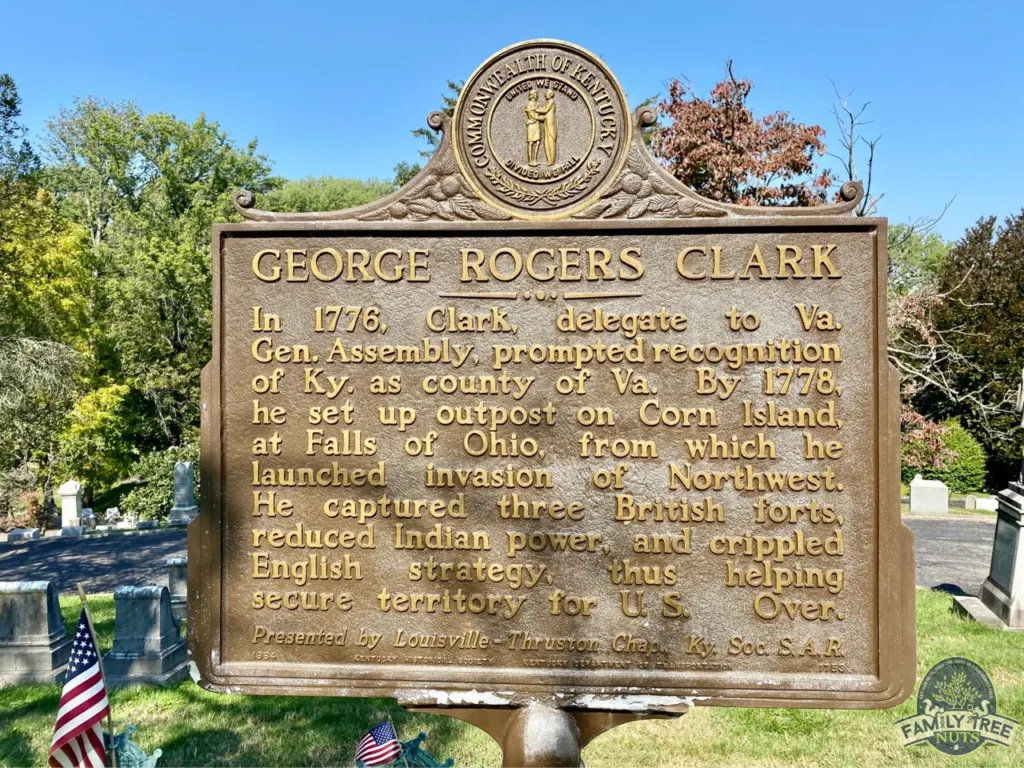
In 1778, GRC established an outpost on Corn Island, at the Falls of the Ohio. This settlement eventually became the city of Louisville, and in 1778, Clark led 175 men into British territory and captured three British forts, and several Native American villages. The British Lieutenant Governor William “the Hair Buyer” Harrison recaptured Vincennes, in modern day Indiana, but Clark led a surprise winter attack and retook the fort, and captured Hamilton in the process. He sent Hamilton through Kentucky, and then to the east as a prisoner. Soon, the British and the Native Americans led more attacks on Kentucky, which prompted Clark and his men to lead counter attacks, invading, and defeating the Shawnee, near modern day Springfield, Ohio.
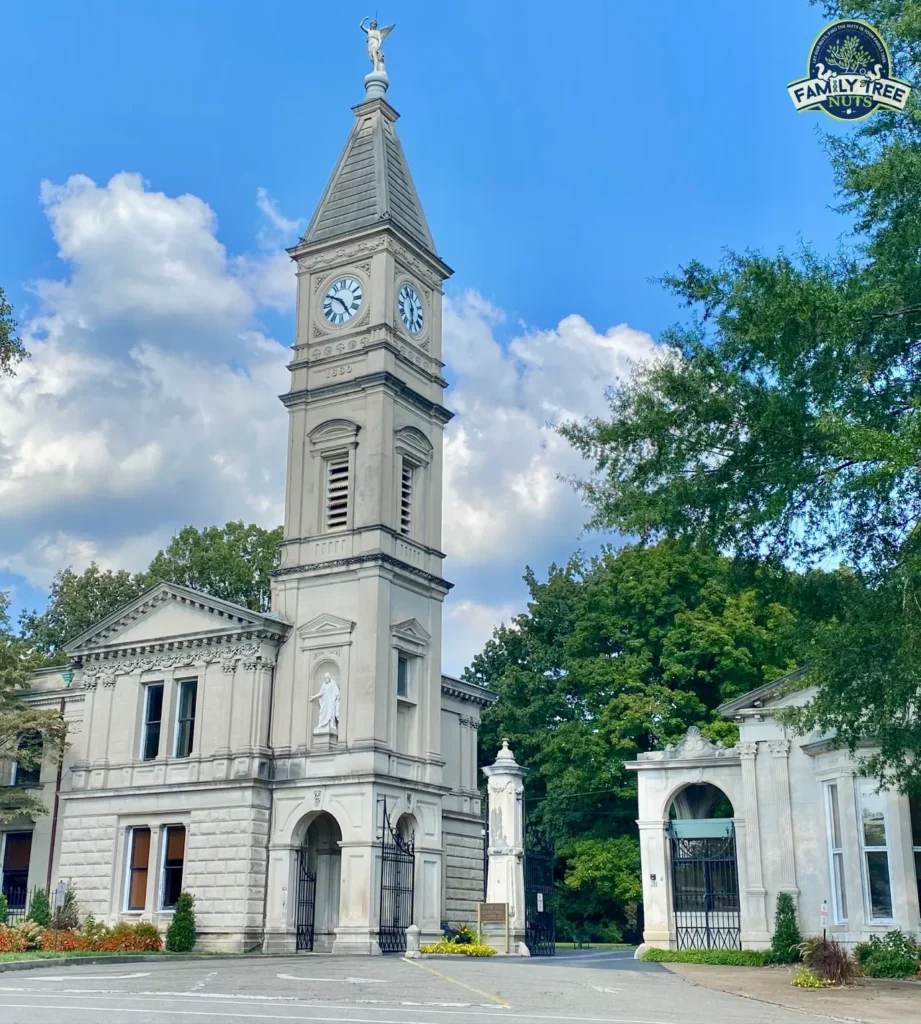
Governor Patrick Henry then promoted Clark to Brigadier General, in command of all the troops in Kentucky, and the Illinois Territory. Washington assigned Clark to attack for Detroit, but plans fell out for the invasion when troops sent by Washington were defeated before arriving, in 1782. The British and Native Americans again attacked Kentucky at Bryan Station, and eventually defeated the Kentucky militia at the Battle of Blue Licks. Clark responded once again, by leading another retaliatory expedition into Ohio, that destroyed many villages along the Miami River. This was the last major expedition of the Revolutionary War. At this time, George Rogers Clark’s attacks on Native Americans made him a hero to almost all of the early pioneers and Americans in general, but today the attacks bring him into modern day criticism. This is just another example of how it’s hard to judge the men of yesterday, by today’s standards.
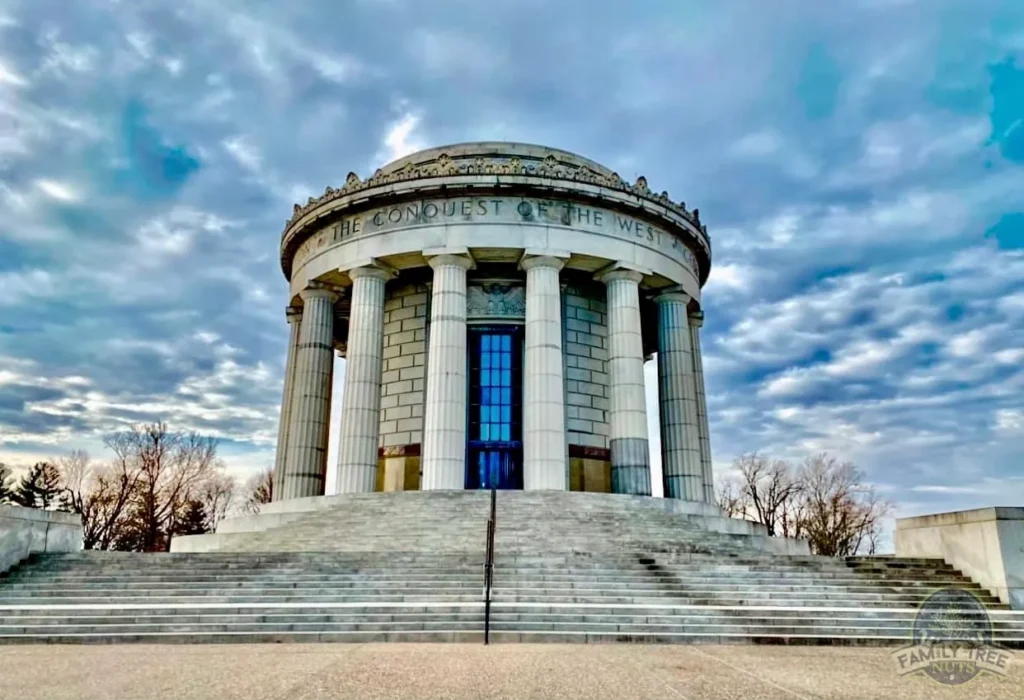
Treaties were made with the Native Americans north of the Ohio River, but raids into Kentucky continued. In 1786, Clark yet again led 1,200 men against Native American villages along the Wabash River. The men almost mutinied and he was accused of being drunk on duty. There was an investigation, in which Clark was proven innocent of all charges, but its reputation had been damaged beyond repair.
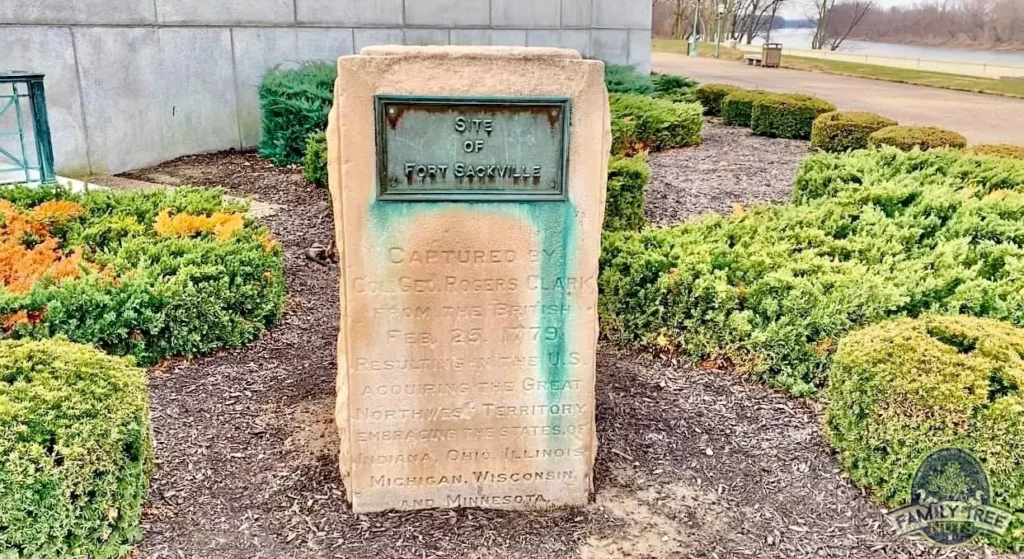
At this time, Clark moved to Indiana near modern day, Clarksville, and that’s when his financial issues started. He had borrowed money to finance his military campaigns, and he even paid the army out of his own pocket, but poor record keeping caused Virginia, and the U.S. government to not reimburse him. Eventually, Clark was rewarded 150,000 acres of land in southern Indiana, but he didn’t have the money to develop it. And 1793, He offered his services to France to sack the British settlements along the Mississippi River. France made him a Major General, but President Washington had prevented Americans to take part in the conflict. The French ambassador was called back to France and the mission fell out. The French did not reimburse Clark for the supplies that he had purchased for the expedition, and Clark lost almost all of his land to his creditors. He was only able to develop a small grist mill.
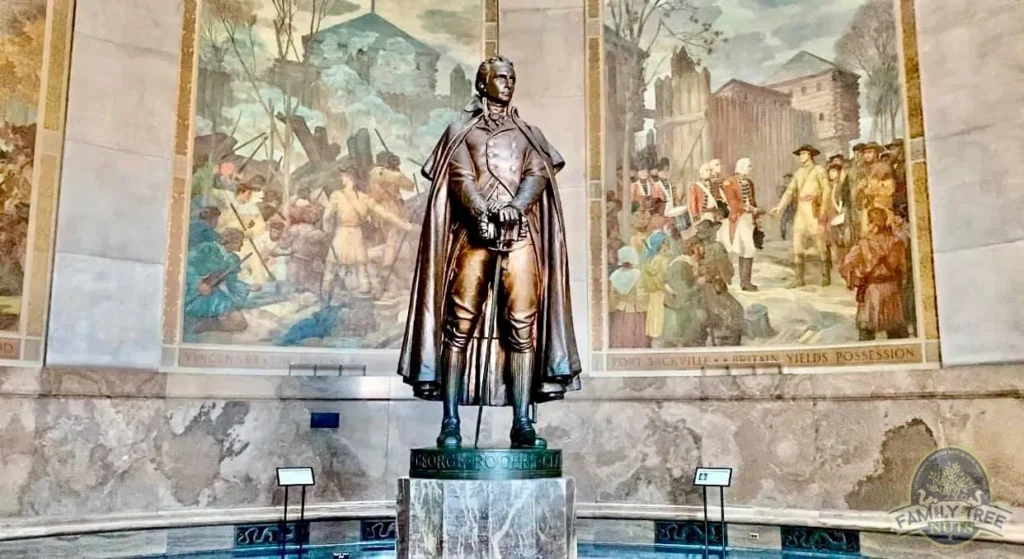
In 1803, he moved to his retirement home on the Ohio River across from Louisville. While living there, his brother William Clark of the famous, Lewis and Clark Expedition, recruited the first members of the Corps of Discovery, which were known as the “Nine Young Men from Kentucky”. It was form GRC’s home place, that the Lewis and Clark expedition stepped off.
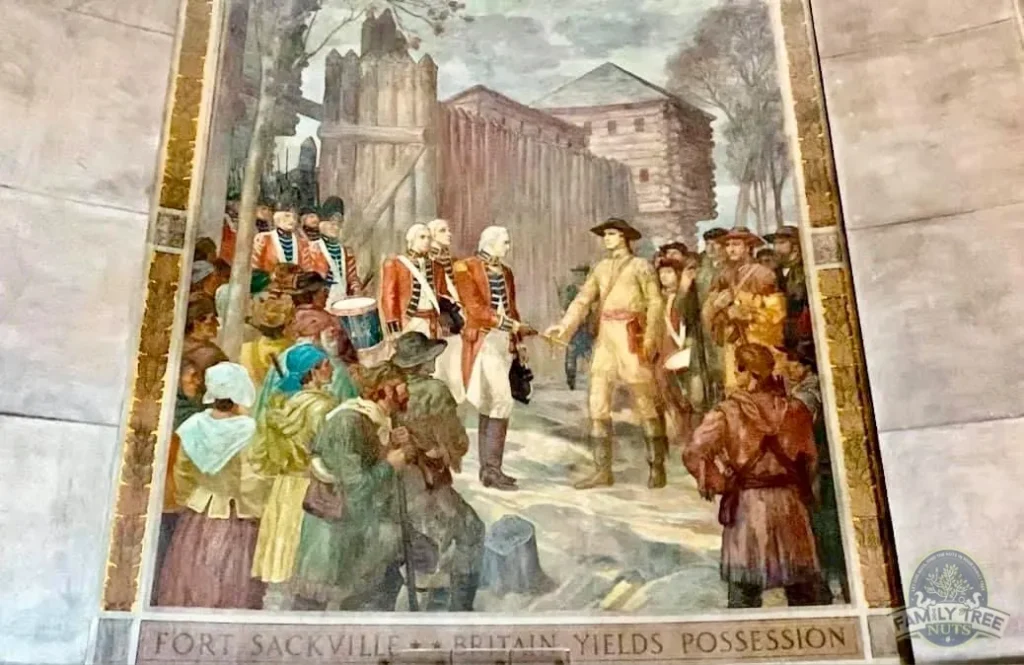
In 1809, Clark suffered a stroke and fell into the fireplace. One of his legs was burned so badly, that it had to be amputated. He was sent to live with his sister and brother-in-law Major William Crogan, at Locust Grove farm, in Louisville. In 1812, Virginia awarded him a $400 a year pension, which is about $1,500 today. They also awarded him a ceremonial sword for his service. These rewards were not even close to reimbursing General Clark for all his sacrifices and to his country.
In 1818, General George Rogers Clark suffered a second stroke and passed away. He was buried at Locust Grove, but he was moved to Cave Hill Cemetery, in 1869, and he is buried next to family. One import family member buried at the same location is, General Jonathan Clark, the second in command under General Lincoln, at the Revolutionary War battles of Brandywine, Monmouth, and others. General Jonathan Clark was once captured and eventually released. GRC is also buried next to one of his other brothers, Captain Edward Clark, and other family members. His youngest brother William Clark, from the Lewis and Clark expedition is buried in St. Louis.
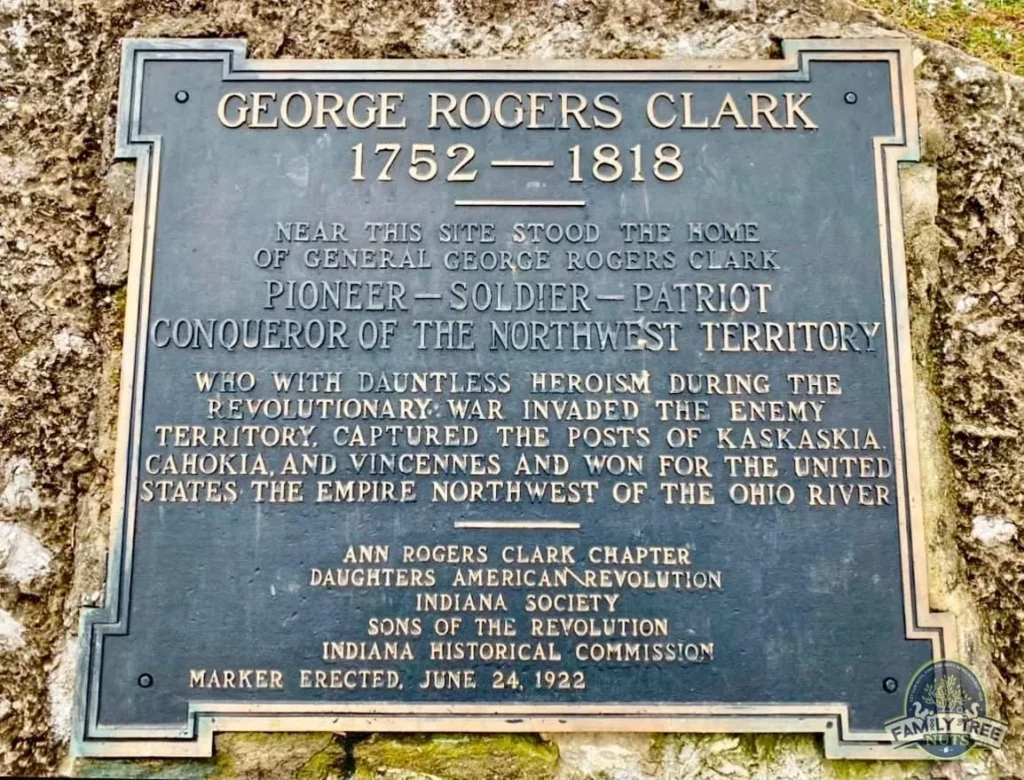
After Clark’s death, Virginia awarded his estate $30,000 for his expenses, but as time went on, more debts were found, and the government made more reimbursements. The last payment to his estate was in 1913. General George Rogers Clark has several things that are named after him, such as counties, towns, and schools.
He has a magnificent monument at Vincennes, which was the site of Fort Sackville, one of Clark’s biggest conquests. The monument is granite and has 16 Doric columns. Inside the monument, is a seven-and-a-half-foot bronze statue of Clark, surrounded by seven murals of Clark’s adventures. Each mural is 28-feet-tall, 16 feet wide, and each mural took artist Ezra Winter, and his six assistants, two years to complete. The seven murals are entitled, “Kentucky, Entering the Great Valley”, “Cahokia, Peace or War with the Indians”, “The Wabash, Through the Wilderness and Flood”, “Vincennes, the British Barrier to the West”, “Fort Sackville, Britain Yields Possession”. “Marietta, the Northwest a New Territory”, “St. Louis, the Way Open to the Pacific”. Other statues in the area of the monument are of Francis Vigo, the Italian merchant who worked as a spy for George Rogers Clark, and one of father Pierre Gibault, the “Patriot Priest”.
For a man that had so much success in early life, he died a simple man, and is forgotten by most Americans. This man that was looked up to by so many, has the simple gray headstone at his grave. George Rogers Clark is a name that many people today have never heard of, but his impact on early America cannot be denied. We aim to keep his legacy alive. General George Rogers Clark, the Washington of the West, the conqueror of the Old Northwest, the founder of Louisville, and an American hero. Be sure to see our video about GRC below.
-Col. Russ Carson, Jr., Founder, Family Tree Nuts
